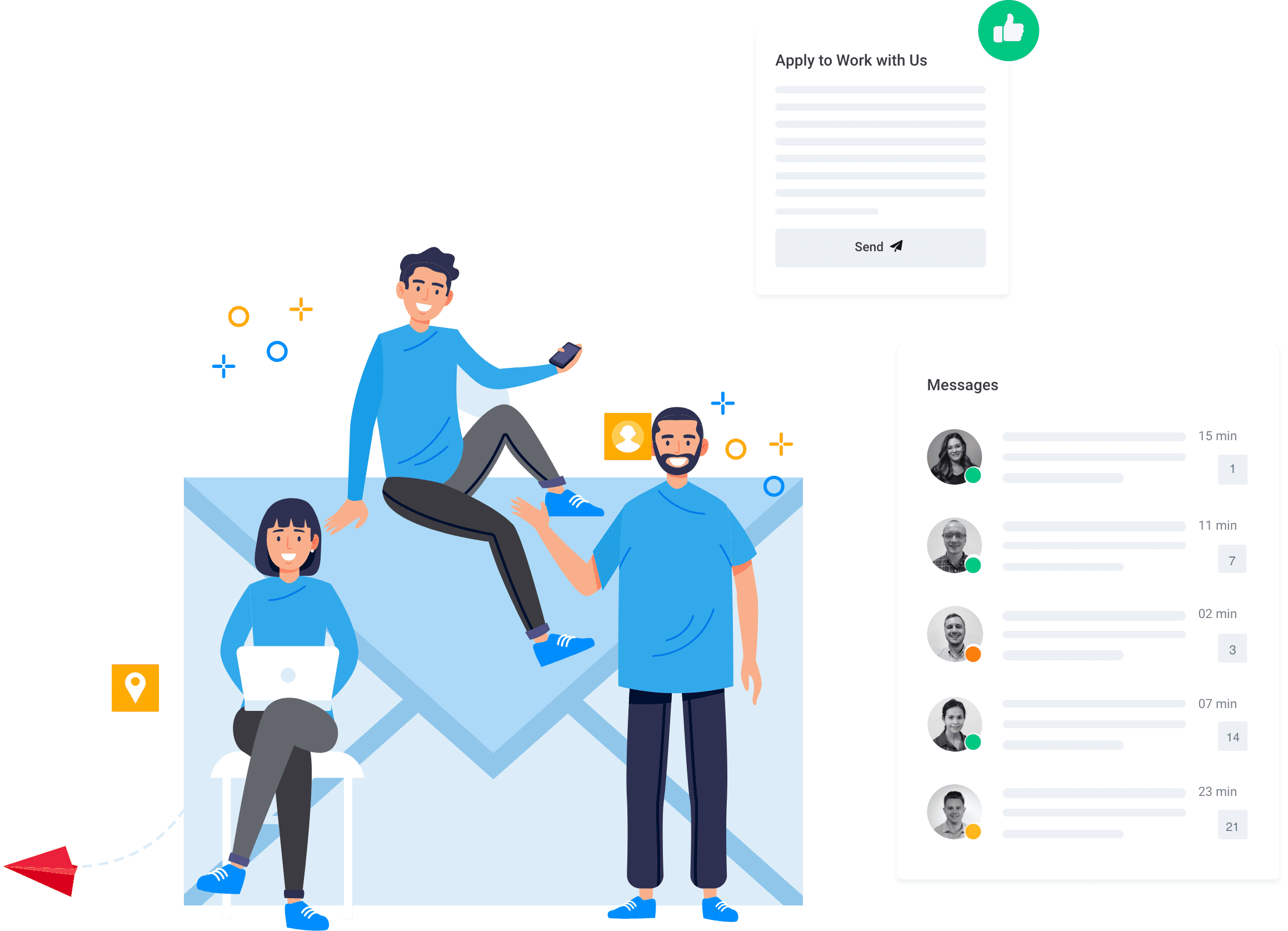Digital marketing is a rapidly changing landscape. There have been more changes in the last 12 months than in the last 12 years. Companies are constantly developing new mediums, new tools, and new platforms that promise to boost your ROI. Marketers and business owners are struggling to keep up with the ever-evolving landscape. The current state of digital marketing shows no signs of slowing down. It is nerve wracking to launch your brand in a sea of competitors. You might not know where to begin.
Fortunately, it has never been easier. There are three goals that you must accomplish with marketing if you want to start seeing conversions:
Step 1: Capture Demand
If your target market knows about your product/service and is searching for it, you can capture demand by essentially telling them, “You’re looking for this item or service? We can offer it to you. Here’s why.”
Step 2: Create Demand
New businesses, or businesses with new products/services, can create demand by disrupting the market. Let your audience know you have a solution that they need.
Step 3: Nurture/Engage Your Prospects
By nurturing both new and existing contacts, you can build strong relationships with your audience. They will be more likely to trust and buy from you. All the conversions you dream of are awaiting you!
Why Are These Marketing Ideals Important?
Capturing demand, creating demand, and nurturing/engaging your prospects are three marketing ideals that still hold true today in the digital world. The only difference is the way you publicize your ads. That is because the vehicles and channels for marketing have changed.
Let’s take a more in-depth look at these 3 ideals, and how you can leverage them to get ahead in your marketing strategy.
How Can Marketers Capture Consumer Demand?
The best way to digitally capture demand is through Google. Ultimately, you have two options:
- Optimize your website and rank organically
- Instantly “pay-to-play” using Google Ads (which is what more and more marketers are doing).
Within Google, you have a few different options. Every time you do a search, the search engine result page (SERP) will return different results. Depending on what you search for, you will likely see results such as:
- Images
- Videos
- Shopping ads
- Maps
This makes it easier than ever to capture your audience’s attention.
Other channels that people are using for searches include:
- YouTube
- Amazon
- Specific industry directories
- Other social platforms
Whatever you’re selling, odds are that there is a platform your audience is going to use to find your product or service (or an alternative, if they do not know that your product exists).
How Can Marketers Create Demand?
You might have the best product or service in the world, but if nobody knows about it, you will never make a profit! Many marketers struggle when breaking into a new product or service category. If your prospects are not aware that your brand, product, or service exists, you can create demand by getting yourself where your customers are. This is called “disrupting” the market.
Creating demand is simple and painless (and a large part of your marketing strategy) thanks to the following methods:
- Facebook Ads
- Instagram Ads
- Video Ads
- Podcasts
A Real Life Example of Creating Demand
Take AirBnB for example. When this company launched, nobody was searching for “how do I rent my home to a stranger?”
Companies such as AirBnB, Netflix, and Uber had to disrupt the market and create awareness before they could become successful. Through channels such as display ads, these companies quickly rose to the top and became industry leaders.
Do Marketers Need to Capture Demand if Awareness Already Exists?
If awareness already exists, it is still crucial to create demand for your specific product or service. There are millions of other stores and ecommerce sites that offer the same product/service. When prospects are searching, they are usually in purchasing mode, credit card in hand! Their main mission is to find the best place to buy what they are looking for. Your mission is to get them to buy from you.
Creating demand is especially useful in the B2B space, because you can directly reach out to specific companies and say, “I offer a solution to the problem you are having. Is this something you’re looking to solve?”
Most of the time, it will be a problem that business owners didn’t even know they have!
Creating Demand vs. Capturing Demand
When it comes to creating demand and capturing demand, many marketers believe that they can either do one or the other. If your market has plenty of awareness about your solution, which strategy should you focus on?
The answer is simple.
You never want to be in a situation where you are not continuously creating demand. If there is a new platform that you’re not already on, you can test it out to see how much more demand you can create. At the end of the day, you want to be where your audience is looking. If you want to make money today, you’ve got to capture demand no matter what.
The bottom line is that if you want to make sales, you will need to do both. This is especially true if you have an audience that might not be looking at what you’re selling. Once you create demand, it is easier to make sales.
Creating Demand without Existing Metrics
If you are breaking into a new space, you may find it difficult to set a goal for your marketing campaign if you don’t have any existing metrics. You might not even know how much money to budget on marketing.
When you are stuck without straightforward metrics (such as cost-per-click, search volume, cost-per-lead, etc.), the best way to start is by tracking your direct traffic through branded searches. If you are not getting results through branded searches, you will know that people are not looking for your brand. Then you will have an idea of where you are and what you need to do to create demand for you brand.
Alternatively, if you have already made some sales, you can use analytics from the actual transactions to measure how many opportunities you have in your sales pipeline. In the digital age, everybody is looking at metrics, and talking about marketing hacks and returns on investments. What many marketers forget is that when it comes to brand, you can simply analyze brand awareness to see what is working, and what’s not.
When it comes down to it, it is all about your brand. Keeping your target market continuously aware of your brand can lead to more (and easy) conversions.
Nurturing and Engaging Your Prospects
Many marketers spend lots of energy attracting and closing customers, but do nothing to keep them engaged. If you gain a new customer and then lose them, you’re losing dollars.
The key is to keep your customers loyal by staying in front of them at all times. In today’s digital world, it is easier than ever to do this with a simple campaign. If your prospects have shown interest in your product or service, and have been to your website and/or social profiles, you can use retargeting ads to keep their attention across platforms.
This strategy is a no-brainer for ecommerce businesses. A prospect might come and look at your shirts, hats, shoes, or whatever you’re selling. If it is the first time that a person has heard of your brand, it is very likely that he or she is going to leave your website after the first visit. In fact, 99% of prospects will leave after the first visit. However, if you can stay in front of them with retargeting, it can drastically increase your conversion rates. Think of all the potential prospects your business is missing out on.
The good news is that marketing automation is getting more and more sophisticated, making it easier for marketers to nurture and engage without much effort. From cross-platform functionality to text messaging and delegating tasks, it is becoming easier and easier to prioritize based on consumer behavior.
If you can segment your audience based on what they’re looking at on your website (or what industries they are in), you can create personalized messages and touch points. Not only can this establish metrics and data, but it can build trust, establish authority. This will ultimately lead to conversions. It is also extremely useful when you need to revisit and improve a campaign.
Nurturing and Engaging Your Existing Customers
If you have an existing client base, it is important to continue nurturing and engaging them as well. The customers you already have are just as important as the prospects who don’t know about you yet. Loyalty is very difficult to attain. Other companies are constantly pitching to your market. If you are not creating demand, somebody else is.
Keeping your current customers engaged is as simple as telling them when you come out with a new service or feature. Whenever something about your product or service has changed, it is the perfect opportunity to communicate with your existing customers.
Tell them how it is going to make their life easier. It is as simple as alerting your existing clients to new customer service hours, or the addition of a 24-hour live chat. If something is going to make them stay with you longer, that’s really what you want to focus on.
If you still aren’t convinced that nurturing your existing customers isn’t worth your time, consider the invaluable data you can get from them. There is so much emphasis on acquiring new customers and making sales that many marketers forget how much you can learn from existing clients.
Even if you just reach out to every customer and learn what they like and dislike about your product, you can use that information to improve your brand. That can lead to even more new customers.
Another strategy to keep existing customers engaged is to upsell or cross-sell. This is especially useful when you have more than one product or service. However, if you don’t educate your existing customers, they won’t know what else you offer.
For example, it is highly unlikely that an existing B2B client is going to go out of their way to look at what else you have. Creating demand for your other products and services shows them what else you can help with.
The bottom line:
- Keep them happy
- Keep them engaged
- Look for opportunities to upsell and cross-sell.
Using PR to nurture B2C businesses is the third strategy. For example, consumer packaged goods companies might donate to the homeless or give away bottled water during a hurricane. The idea is to show the value of your company. Prove to your loyal customers that there is a reason to stand behind you and buy your products.
It is not just about funnels. Nurturing and engaging is a circle that needs to continuously go around and around again. Great ways to keep the circle going include:
- Facebook ads
- Instagram ads
- Email marketing
- Upselling
- PR are
Plus, the more you nurture and engage, you will continue to have a better idea of what your prospects are looking for.
The Bottom Line
By implementing these 3 marketing ideals, you can easily get a grasp on the ever-changing digital landscape. The first step is to see whether you need to create demand or capture existing demand. Then you can begin to plan your nurture and engage strategy. You can start seeing conversions in no time!






























